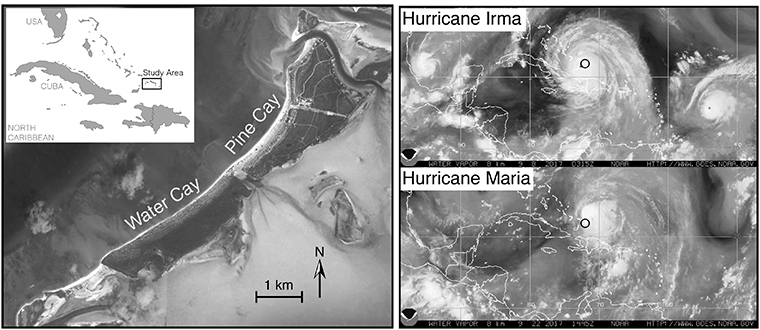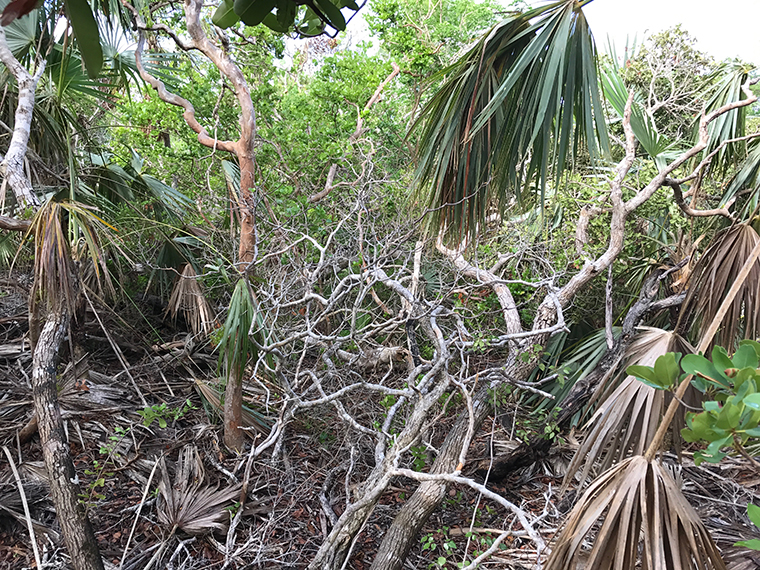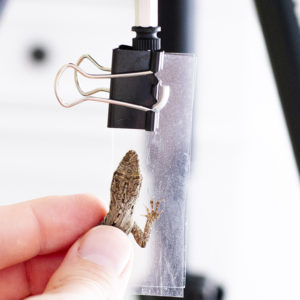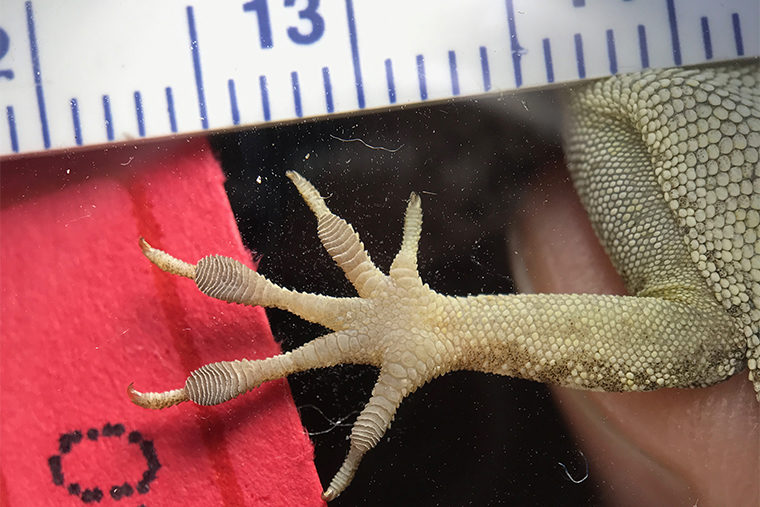Nobody knows exactly what happens at the eye of the storm.
But biologists at Washington University in St. Louis have published a first-of-its-kind look at the physical characteristics of lizards that seem to make the difference between life and death in a hurricane, as reported on July 25 in the journal Nature.
Hint: long, strong back legs do not help like you think they might.
The hyperactive 2017 hurricane season was one of the worst ever experienced in the Atlantic Ocean region. Damage from totals for the hurricane season topped $282 billion — the costliest on record. Hurricane Harvey hit in mid-August 2017, followed just a few weeks later by Hurricane Irma and Hurricane Maria in September. Each of these storms had winds in excess of 125 mph, with Irma up to 170 mph.

For humans, the devastation to homes and businesses was extreme. For tropical anole lizards living on the more remote cays of Turks and Caicos, there was only the ones who survived — and the ones who didn’t.
And that’s where the researchers came in, using data serendipitously collected just before the storms hit, and again weeks afterward, to demonstrate for the first time the effects of hurricane-induced natural selection.
“Hurricanes are in the news, and it seems that they’re becoming more destructive,” said Jonathan Losos, the William H. Danforth Distinguished Professor at Washington University and professor of biology in Arts & Sciences. “Something like this has never been documented before because it’s so difficult. The timing had to be just right.”
Last eyes on the lizards
Colin Donihue is a postdoctoral fellow at Harvard University who is conducting research with Losos, who was previously at Harvard. Last September, Donihue was just wrapping up his measurements of endemic Turks and Caicos anole, Anolis scriptus, as a baseline for a long-term invasive species eradication project when Hurricane Irma started to brew.
The sky was still bright blue, but the weather forecasters were getting anxious. As Donihue quickly gathered his stuff and headed for the airport, his local cab driver was more skeptical: This storm would blow over, he told Donihue, just like others had done in the past.
Four days later, Hurricane Irma made landfall on Sept. 8, 2017. Donihue read the news of its devastation from his apartment in Boston. He realized his lizard data might have value outside of its original intent.

Donihue had the last eyes on the population before an unthinkable natural disaster. Now, it was time to determine if the storms had been a “selective event” — an event with the power to change the course of life not just for the lizards that had weathered them, but potentially for the generations that followed.
So Donihue started making calls. The Turks and Caicos government was in recovery mode; clean water, electricity and shelter were priorities, and basic phone and Internet services were still not available across the islands. But Donihue had made good connections during his recent trip, and one government scientist in particular was sympathetic to his pleas. A new set of biological permits was granted, and Donihue and study co-author Anthony Herrel of the Paris Museum were back on a plane.
Before and after the storm
Back on the experimental islands, it was a mess. Trees were down and tree-limbs strewn about, making it difficult to walk in some places. But there were signs of life.

“Heading back to Pine Cay, we weren’t sure what we’d find, but when we got to the field and saw a few lizards running around, we were eager to get catching and start measuring,” said Donihue, who holds a National Science Foundation (NSF)-funded fellowship that will bring him to Washington University in the winter of 2019.
“We walked exactly the same transects we had the last time,” Donihue said. “There were definitely fewer lizards. We had to work harder to catch our sample size.”
The team spent two days collecting just shy of 100 lizards on two separate islands, then measured their forelimbs, hindlimbs and core body lengths, and took pictures of their toe pads.
The vital statistics of the survivors could be compared with the measurements of the general lizard population that had been collected before the storm.

“The prediction was that if we saw any changes, they would be changes in the features that help lizards hold on — they would be related to clinging ability,” Donihue said. “For example, the sticky toe pads on their fingers and toes, maybe they would be larger.”
Comparing lizards collected before and after the storm, the researchers found that the survivor populations on both islands had larger toe pads on both their forelimbs and hindlimbs.
The survivors had proportionately longer fore legs than the initial/pre-hurricane population, while the long bones in between their hips and knees on their back legs (their femurs) were shorter. The survivor population had smaller bodies, too. The observations were statistically significant and consistent at both island sites.
Natural selection favors certain characteristics
Hurricanes bring death and destruction to those in their paths. There are well-documented recent examples of hurricanes killing off large numbers of individuals from many species as diverse as plants, sea sponges, insects, birds and monkeys.
“With regard to evolution, the question is whether hurricanes cause selective mortality: do individuals with certain traits survive better than individuals with different traits? The alternative possibility — that devastation is so massive that mortality is indiscriminate, not favoring some individuals over others — is certainly possible,” Losos said.

The results of this study — that the island populations of lizards both changed significantly, and in the same way from before the hurricanes to after — suggest that natural selection favored individuals with certain characteristics.
Of course, as the authors point out, there are other possibilities.
“Perhaps the hurricane blew in lizards with bigger toepads and shorter hindlegs from another island. Or perhaps the act of clinging to the branches in high winds actually caused their forelegs to get longer,” Losos said. “We can’t rule these possibilities out because this study was the result of serendipity, rather than specifically being designed to test the effect of hurricanes.
“Still, hurricane-induced natural selection seems like the best explanation for these findings,” Losos said.
Behavioral piece is still unknown
The missing piece of the story is still a behavioral one. Researchers don’t know what lizards actually do in the middle of a hurricane. Do they abandon their typical tree perches and go to the ground? Or do they try to seek cover in notches or crevices within the trees? Or do they just hang on?
A pilot study exploring wind threshold provides some insight into this aspect of the lizard decision-making process.
When the researchers exposed lizards from the survivor population to hurricane-force winds, the lizards almost uniformly swiveled around their perches to the side opposite from the wind source — and just held on tight. As wind speeds increased, they lost hold with their hindlimbs first, and were left hanging by their forelimbs.
It appears that lizards are built to cling, but because of their stance on the perch, their big hindlimbs make them vulnerable to getting pushed off by high winds. This could explain the pattern that survivor lizards have longer forelimbs and shorter hind legs after a hurricane, the researchers speculate.
A future with bigger, and more frequent storms
Understanding how storms select for species survival is an important area of future study, worthy of a dedicated study design.
“We know that hurricanes are getting more frequent, and we know that they’re getting more strong,” Donihue said. “So, setting up a network of sites that are actually set up to investigate the question of how hurricanes are changing the evolutionary trajectory of species I think could be really useful.”
